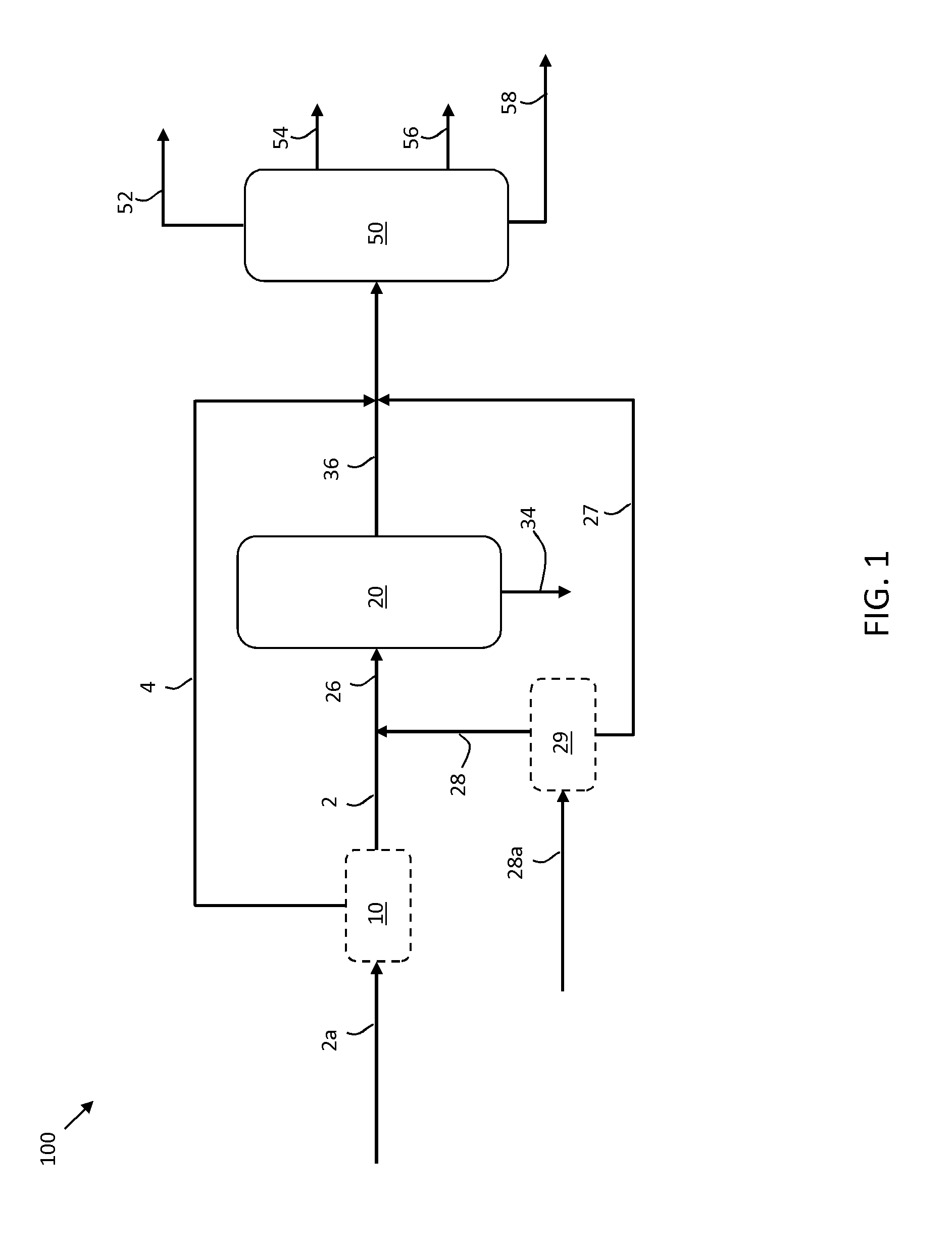Integrated solvent-deasphalting and fluid catalytic cracking process for light olefin production
a technology of solvent deasphalting and fluid, which is applied in the direction of solvent deasphalting, hydrocarbon oil treatment products, extraction purification/separation, etc., can solve the problems of escalating raw material costs, higher ethylene yield, and similar commercial detriment, so as to increase the proportion of lighter olefms
- Summary
- Abstract
- Description
- Claims
- Application Information
AI Technical Summary
Benefits of technology
Problems solved by technology
Method used
Image
Examples
example
[0066]An atmospheric residue derived from atmospheric distillation of a crude oil was mixed with gas condensate at a volumetric condensate:residue ratio of 10:1 for partial deasphalting. The mixture was stirred at room temperature, them maintained for a few hours to settle, and filtered to separate the precipitated material. About 5wt % of the atmospheric residue was precipitated. The properties of the atmospheric residue, condensate and obtained deasphalted mixture are given in Table 1 below.
TABLE 1AtmosphericGasDeasphaltedResidueCondensate MixtureGravity, Specific 60 / 60 ° F.0.96510.77210.7796Sulfur, Total Wt %3.20.05210.0560Vanadium, ppm29—1.4Microcarbon Residue, wt %6.20.010.31Nickel, ppm9—
[0067]Catalytic cracking of the deasphalted mixture was conducted using a micro activity testing (MAT) unit well known to a person of ordinary skill in the art at 600° C. and a C / O ratio of ˜4. The catalyst contains a mixture of Y zeolite and ZSM-5. The cracking of the gas condensate alone was ...
PUM
 Login to View More
Login to View More Abstract
Description
Claims
Application Information
 Login to View More
Login to View More - R&D
- Intellectual Property
- Life Sciences
- Materials
- Tech Scout
- Unparalleled Data Quality
- Higher Quality Content
- 60% Fewer Hallucinations
Browse by: Latest US Patents, China's latest patents, Technical Efficacy Thesaurus, Application Domain, Technology Topic, Popular Technical Reports.
© 2025 PatSnap. All rights reserved.Legal|Privacy policy|Modern Slavery Act Transparency Statement|Sitemap|About US| Contact US: help@patsnap.com



